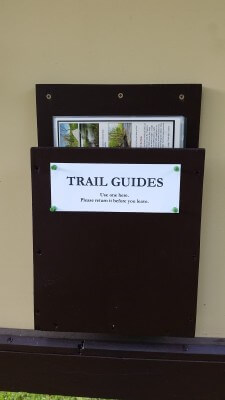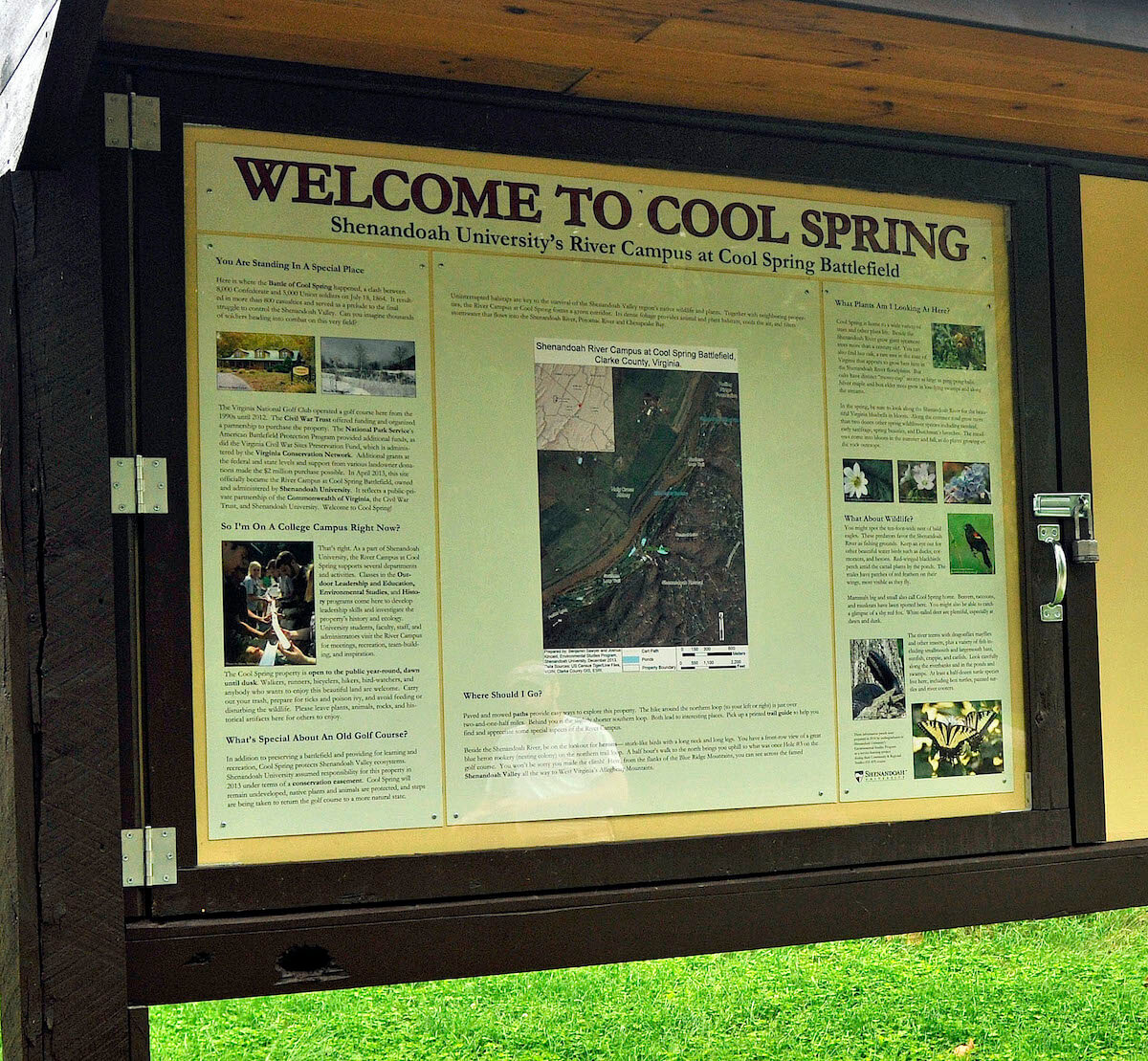Just in time for fall colors, a new trail publication and information panels greet visitors to Shenandoah University’s River Campus at Cool Spring Battlefield in Clarke County, Virginia. Undergraduate students in Shenandoah’s Environmental Studies Program developed them as service-learning projects.
The property’s paved paths are open for walking, bicycling, hiking and nature study. Each summer, more than two dozen great blue heron families raise their young in a “rookery” of nests clustered in the tops of riverside trees. Bald eagles, beavers, rare bur oak trees and red-winged blackbirds also find homes at the river campus.
 These and other features of the property are explained on the new kiosk sign panels and in “Discover Nature at Cool Spring. A Trail Guide for Families.” The kiosk is located where trails begin next to the property’s parking lot. Trail guides are available at the kiosk.
These and other features of the property are explained on the new kiosk sign panels and in “Discover Nature at Cool Spring. A Trail Guide for Families.” The kiosk is located where trails begin next to the property’s parking lot. Trail guides are available at the kiosk.
The printed trail guide leads visitors along a paved 1.2-mile route with nine stops. These stops include a riverside view, rocky slope, bat roosting boxes, pond and the heron rookery.
 Ten undergraduates in Shenandoah University’s Environmental Studies Program developed the trail guide and information panels. Cool Spring Site Manager Gene Lewis and staff member Ben Sawyer assisted by moving and refurbishing the kiosk.
Ten undergraduates in Shenandoah University’s Environmental Studies Program developed the trail guide and information panels. Cool Spring Site Manager Gene Lewis and staff member Ben Sawyer assisted by moving and refurbishing the kiosk.
The property is located east of Berryville, Virginia, on the former Virginia National Golf Course. Visitors can reach the river campus by turning left immediately after crossing the Shenandoah River on Route 7. From there, Parker Lane leads approximately two miles to the parking lot below the clubhouse.
The River Campus at Cool Spring Battlefield is open daily to visitors for from dawn to dusk. Among the available activities are hiking, bird watching, running and nature study. No restrooms or other facilities are provided, but more than seven miles of paved paths and three miles of mowed pathways through the meadows offer access through the property. Three interpretive signs explain the Battle of Cool Spring, which took place on July 18, 1864.
The Shenandoah University students’ project began in April 2014 as part of a senior-level course entitled Community and Regional Studies. Taught in alternate years by Woodward Bousquet, Ph.D., professor of environmental studies and biology at Shenandoah, the course includes a month-long service-learning project designed to challenge students to meet local needs by applying what they have learned in previous courses.
Since the course’s inception in 1995, its students have helped protect the Abrams Creek Wetlands, developed the Winchester & Frederick County—Naturally! brochure, prepared interpretive signs for the Redbud Run Greenway, and promoted linear parks in the Shenandoah Valley region.




